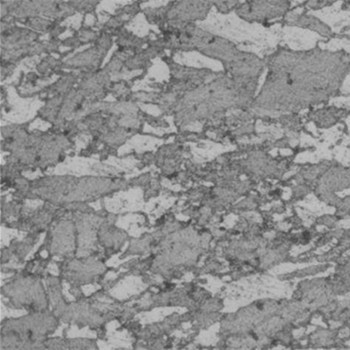How many types of annealing heat treatment did you know?
Annealing is a heat treatment process by which the steel and alloys are heated to a suitable temperature for a certain period of time and then allowing it slowly cooled (furnace cooling). The purpose of annealing is to transform steel from Austenite to Pearlite, reduce hardness and increase ductility, facilitate machining and cold deformation, and at the same time uniform the chemical composition and structure of steel to eliminate internal stress and work hardening, prevent deformation and cracking. Some types of Aluminum, Copper, Titanium and other materials may also respond to an annealing process. Common annealing methods according to the temperature and chemical composition in the process, the annealing can be divided into:

1.Full Annealing.
Heat the steel to 20 ~ 30 ℃ and keep a period of time after slow cooling to get close to balance the organization’s heat treatment process (completely austenitizing). Full annealing is mainly used for Hot-Worked sheets, forgings, and castings made from medium and high carbon steels as well as its welding parts. The hardness of low carbon steel after annealing is not good for machining.
Full annealing is aimed at refining grain, homogeneous structure, eliminating internal stress, reducing hardness and improving the machinability of steel. After full annealing, the structure of the hypoeutectoid steel is F+P. In the actual production, in order to improve productivity, annealing cooling to about 500℃ or empty out cold.
2. Partial Annealing.
Heat the steel to the state of hypoeutectoid or hypereutectoid steel and then cool slowly after heat preservation to obtain the heat treatment process close to the balanced structure. It is mainly used to obtain spherical pearlite structure to eliminate internal stress, reduce hardness and improve machining performance. Spheroidization annealing is a kind of partial annealing.
3. Isothermal Annealing.
This process is also referred grecrystallization annealing which the steel is heated to a temperature higher than critical temperature, stayed for a long time and rapidly cooled to a room temperature, making the transformation from Austenite to Pearlite. It takes a long time to finish full annealing, especially for the super-cooled Austenitic stainless steels, while the isothermal annealing can greatly shorten the annealing time.
This process is for high carbon steel (C > 0.6%), tool steel, alloy steel (the amount of alloy element > 10%). Isothermal annealing is also helpful to obtain uniform tissue and properties but not suitable for large sections.
4. Spheroidizing Annealing.
A heat treatment process for spheroidizing carbide to obtain granular pearlite. Heated the steel to Ac1 more than 20- 30 ℃ and keep the temperature of 2- 4h after cooling. Spheroidization annealing is mainly used to reduce the hardness, uniform structure and improve the machinability to prepare for quenching. This is a process for high carbon and alloy steel in order to improve their machinability. There are many methods for spheroidizing annealing process, this can be done by three methods:
- A) Once spheroidizing annealing: heat the steel to greater than critical temperature above 120 ~ 30 ℃and stayed for a time, then allow it cooling down slowly in the cooling furnace. The original tissue before annealing should be a fine sheet pearlite and no carburized mesh is allowed.
- B) Isothermal spheroidizing annealing: heat the steel after heat preservation, along with the furnace cooling below critical temperature10 ~ 30 ℃. After isothermal along with the furnace cooled to about 500 ℃ or slow released air cooling. It has several advantages such as short cycle, uniform spheroidization and easy quality control.
- C) reciprocating spheroidizing annealing
5. Diffusion Annealing(Homogenizing annealing).
A heat treatment process in which ingots, castings, or blanks are heated to a temperature slightly below critical temperature for a long time and then cooled slowly to eliminate chemical inhomogeneity. Thus to eliminate dendritic segregation and regional segregation during solidification of the ingot, and to homogenize the composition and structure. The temperature of diffusion annealing is very high, usually above the critical temperature of 100 ~ 200 ℃ for 10 ~ 15 hours, which depending on the segregation and the steel grade. Diffusion annealing for some high quality alloy steel and alloy castings and ingot with serious segregation.
6. Stress Relief Annealing.
In order to eliminate the residual stress, the steel heated to a temperature below the critical temperature (generally 500 ~ 650 ℃) after the heat preservation, then cooled in the furnace. De-stressed annealing does not change the metal structure.
7. Recrystallization annealing.
Recrystallization annealing, also known as intermediate annealing, is a heat treatment process that heats the cold-deformed metal above the recrystallization temperature for a certain period of time, so that the deformed grain can be converted into the uniform equiaxed grain to eliminate the processing hardening and residual stress. Recrystallization must occur at first with a certain amount of cold plastic deformation and then at a certain temperature. The lowest temperature at which recrystallization occurs is called the lowest recrystallization temperature. Heating of recrystallization annealing temperature should be higher than the lowest recrystallization temperature of 100 ~ 200 ℃ (the minimum steel recrystallization temperature of about 450 ℃), slow cooling after appropriate heat preservation.


